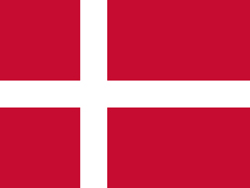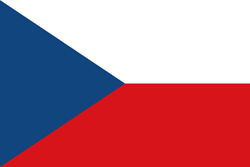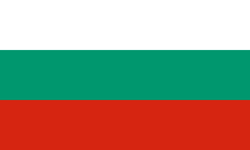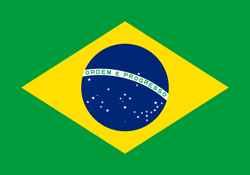Countries
IPPOG
Members
Denmark

Intro
Content to be provided
Details
JOINED: 2016
CURRENT STATUS: MEMBER
Content in local language to be provided
JOINED: 2016
CURRENT STATUS: MEMBER
Representative
Ian Bearden
I am a faculty member at the Niels Bohr Institute, University of Copenhagen. I came to Copenhagen in 1994 as a post-doc in high spin gamma ray spectroscopy after receiving my PhD from Purdue University based on research performed as a graduate assistant at Argonne National Laboratory. In 1995, I moved up in energy and joined the High Energy Heavy Ion group where I have been since. I am a member of the ALICE collaboration at the LHC.
IPPOG
Members
Czech Republic

Intro
Particle physicists in Czech Republic are curious and keen on discovering of all beauties and secrets of the microworld - pretty much like their colleagues all over the macroworld. There are teams of tens Czech physicists on ATLAS and ALICE experiments at CERN, studying collisions of protons and heavy ions. Heavy ion collisions are studied on STAR and sPHENIX in BNL and HADES and CBM in FAIR as well. Czech teams also participate in Electron-Ion Collider and linear positron-electron collider preparation. Smaller Czech teams are involved in neutrino physics research on NOvA, Daya Bay, JUNO and KATRIN, on astroparticle experiments Auger and CTA, on Belle II "beauty-factory" experiment in KEK and on several other experiments focused on various topics. Theorists are trying to wrap their head around topics like String Theory and Quantum Qravity, Grand Unified Theories, Chiral Perturbation Theory, phenomenology of heavy ion collisions, Cosmology and others.
Many particle physicists all over the Czech Republic enthusiastically organize various outreach events for general public. Physics is brought to music festivals or physics meets arts events, general public and high-school students build simple experiments at workshops or as part of big projects like CZELTA, high-school students are becoming particle physicists for one day in dedicated workshops and they are visiting Czech labs commonly. Of course, Czech physicists give engaging talks for general public, write various kinds of articles, give interviews for TV, radio and newspapers and they visit high-schools or even teach special physics courses for interested high-school students. Particle physicists are in contact with high-school teachers via various programs. For example, high-school teachers have regular opportunities to visit CERN. And high-school students too. Particle physics is our passion!
Details
JOINED: 2016
CURRENT STATUS: MEMBER
Čeští částicoví fyzikové jsou zvědaví a touží odhalovat všechny krásy a tajemství mikrosvěta - podobně jako všichni jejich kolegové z makrosvěta. Desítky českých fyziků studují srážky protonů a těžkých iontů na experimentech ATLAS a ALICE v CERN. Srážky těžkých iontů jsou také zkoumány Čechy na experimentech STAR a sPHENIX v BNL, HADES a CBM ve FAIR. České týmy se také podílejí na přípravách nových urychlovačů, jejichž cílem je studovat srážky elektronů s těžkými ionty a elektronů s pozitrony. Menší české týmy se podílejí na neutrinové fyzice v experimentech NOvA, Daya Bay, JUNO a KATRIN, na astročásticových experimentech Auger a CTA, v "továrně na krásu" Belle II v KEKu a na několika dalších experimentech zaměřujících se na různá témata. Teoretikové se zabývají věcmi, jako jsou strunová teorie, kvantová gravitace, velké unifikační teorie, chirální poruchová teorie, fenomenologie srážek těžkých iontů, kosmologie a další.
Mnozí částicoví fyzikové energicky organizují po celé České republice nejrůznější popularizační akce pro širokou veřejnost. Fyzika se tak dostává na hudební festivaly a prolíná se s uměním v dedikovaných projektech, středoškoláci a veřejnost stavějí jednoduché experimenty na jednorázových workshopech, nebo jako součást velkého projektu CZELTA, středoškoláci se na den stávají částicovými fyziky a také běžně navštěvují české laboratoře. Samozřejmě také částicoví fyzikové v ČR běžně přednášejí pro širokou veřejnost, píší nejrůznější články o fyzice, dávají rozhovory pro televizi, rozhlas a noviny, navštěvují školy a někteří na školách dokonce učí pravidelné výběrové kurzy. Česká komunita částicových fyziků udržuje kontakt se středoškolskými učiteli skrze různé speciální programy. Například mají středoškolští učitelé pravidelné příležitosti k návštěvě CERNu. A také středoškolští studenti. Částicová fyzika je naše vášeň
JOINED: 2016
CURRENT STATUS: MEMBER
Representative
Vojtech Pleskot
Vojtech studied particle physics at the Charles University in Prague. He has been a member of the ATLAS collaboration since 2009. From 2015 to 2017, he was a post-doc at Johannes Gutenberg University in Mainz and, currently, he's hired by the Charles University. Vojtech's research interests are all centered around analysis of ATLAS data from proton-proton collisions.
IPPOG
Members
Bulgaria

Intro
Sofia Tech Park develops activities to support start-ups, small and medium enterprises, science, education and innovation. There are few main components included in the park:
Incubator – The incubator community includes start-ups and developed companies, investment funds and educational organizations.
Forum – A venue for events in the field of science, education, innovation, technology and entrepreneurship.
Experimentarium – A permanent interactive composition “TechnoMagicLand” for children with interests in the field of natural sciences.
Laboratory complex (R&D&I consortium) – Our 11 laboratories offer an opportunity for development of research and business projects in various research areas.
Details
JOINED: 2016
CURRENT STATUS: MEMBER
София Тех Парк развива дейности в подкрепа на стартиращи предприятия, малки и средни предприятия, наука, образование и иновации. Има няколко основни компонента, включени в парка:
Инкубатор – Общността на инкубатора включва стартиращи и развити компании, инвестиционни фондове и образователни организации.
Форум – Място за събития в областта на науката, образованието, иновациите, технологиите и предприемачеството.
Експериментариум - Постоянна интерактивна композиция “ТехноМеджиkЛенд” за деца с интереси в областта на природните науки.
Лабораторен комплекс (Консорциум за научноизследователска и развойна дейност) – Нашите 11 лаборатории предлагат възможност за развитие на изследователски и бизнес проекти в различни изследователски области.
JOINED: 2016
CURRENT STATUS: MEMBER
Representative
Roumyana Mileva Hadjiiska
Roumyana Hadjiiska joined the CMS collaboration in 2010 at the start of her PhD education in the University of Sofia “St. Kliment Ohridski”, Bulgaria. Since then, she dedicates the main part of her time to work within the CMS muon system, including muon physics and muon detector performance. During her PhD she joined also a one year project working for the Technical Transfer Office at the same university.
IPPOG
Members
Brazil

Intro
Brazil is represented in IPPOG by the National Network of High Energy Physics (Rede Nacional de Física de Altas Energias, RENAFAE, in Portuguese), officially created by the Brazilian Ministry of Science and Technology to coordinate the national effort in High Energy Physics. The country has a long tradition in High Energy Physics and its outreach. The event Masterclasses Hands On Particle Physics is applied in the country since 2008 and nowadays more than a 1000 students are reached every year in different institutions spread around the country. By the time Brazil was joining IPPOG, a Working Group was created congregating Particle Physicists and Science Education Experts from different Brazilian institutions around the country to promote particle physics outreach activities and to represent the country in IPPOG. Several initiatives are been developed by this group as the organization of regular meetings to exchange ideas and start new collaborations among the participants. For instance, a project to introduce cosmic ray detectors in elementary schools was born from this group. Given the size and demands of the country, uncountable initiatives and activities can still be created to promote particle physics and scientific knowledge in Brazil.
IPPOG Brazilian website: http://www1.fisica.org.br/ippog/
Details
O Brasil é representado no IPPOG pela Rede Nacional de Física de Altas Energias (RENAFAE), oficialmente criada pelo Ministério da Ciência e Tecnologia do Brasil para coordenar o esforço nacional em Física de Altas Energias. O país tem uma longa tradição em Física de Altas Energias e sua divulgação. O evento Masterclasses Hands On Particle Physics é aplicado no país desde 2008 e hoje mais de 1000 alunos participam do evento a cada ano em diferentes instituições espalhadas pelo país. Quando o Brasil estava ingressando no IPPOG, foi criado um Grupo de Trabalho reunindo Físicos de Partículas e Especialistas em Educação Científica de diferentes instituições brasileiras de todo o país para promover atividades de divulgação da física de partículas e representar o país no IPPOG. Várias iniciativas são desenvolvidas por este grupo como a organização de reuniões regulares para troca de ideias e para iniciar novas colaborações entre os participantes. Por exemplo, um projeto para introduzir detectores de raios cósmicos nas escolas primárias nasceu deste grupo. Dadas as dimensões e as demandas do país, inúmeras iniciativas e atividades ainda podem ser criadas para promover a física de partículas e o conhecimento científico no Brasil.
IPPOG Brazilian website: http://www1.fisica.org.br/ippog/
JOINED: 2016
CURRENT STATUS: MEMBER
Representative
Marcelo Munhoz
Marcelo G. Munhoz has a degree in Physics (1992), a Master's Degree (1995) and a PhD in Nuclear Physics by the University of São Paulo (1998). He was hired as a faculty by the same University in 2003 where he became Associate Professor in 2009. He makes research in the area of Nuclear Physics, with emphasis in the study of collisions between relativistic heavy ions and nuclear instrumentation. He has several activities concerning scientific dissemination as well.
IPPOG
Members
Austria

Intro
Content to be provided
Details
JOINED: 2016
CURRENT STATUS: MEMBER
Content in local language to be provided
JOINED: 2016
CURRENT STATUS: MEMBER
Representative
Natascha Hoermann
Natascha started her education at a higher technical school for computer science and continued with physics at the Vienna University of Technology. Since 2007, she is working at the Institute of High Energy Physics (HEPHY) in Vienna. Her research field is physics analysis at the CMS experiment at CERN. She searches for supersymmetry, in particular the supersymmetric partner of top quarks in events with a Z boson and hadronic decays of top quarks. Furthermore she is involved in the operation and support of the Vienna GRID computing Tier-2 centre and the institute computing environment.

